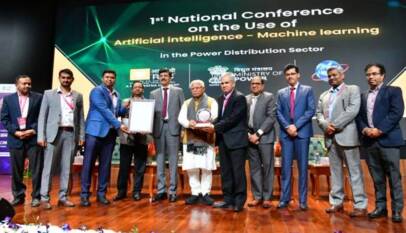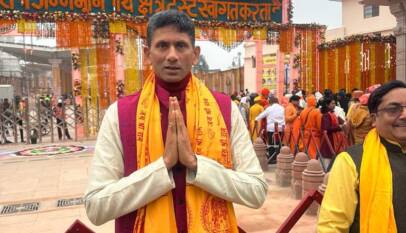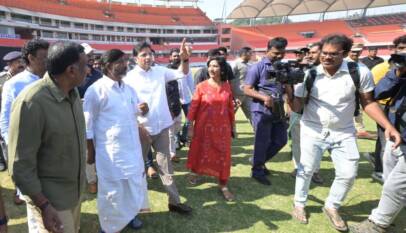Maharashtra Assembly Election Voting Process Successfully Completed; Counting Arrangements Finalized
Mumbai : The voter turnout in the Maharashtra Assembly Election 2024 has increased to approximately 66% compared to 61.1% in the 2019 Assembly Election (excluding postal ballots). Under the leadership of Chief Election Commissioner Rajiv Kumar, the Election Commission of India conducted a detailed analysis of the recently concluded Lok Sabha election processes, implementing several initiatives that were effectively observed on polling day, November 20, 2024.

A second special summary revision campaign for the voter list was conducted in August and September to ensure transparency and updates. This added 40 lakh new voters, with over 50% being in the 18-19 age group. Special attention was given to including transgenders, particularly vulnerable tribal groups (PVTGs), and disabled voters.
Polling stations received focused improvements, including restructuring, reducing group centralization, relocating polling booths to permanent buildings, and setting up new polling stations as needed. Over 5800 locations saw reduced group centralization; 1100 polling booths were set up in high-rise buildings and housing complexes, and over 200 in slum areas.
The “Know Your Polling Station” campaign ensured every voter could easily identify their polling booth. Almost all voters received voter information slips. In Mumbai, unique color codes were assigned to polling stations in single locations, which were also printed on voter information slips for better identification.
Basic assured facilities like drinking water, ramps, seating arrangements, and parking were ensured at polling stations. Rural and urban local bodies successfully provided these amenities, garnering statewide appreciation from voters.
Polling officials were trained to handle voters courteously. Unlike the Lok Sabha election, where voters entered polling stations one at a time, this time, up to four individuals were allowed simultaneously. The three phases—voter identification, ink marking, and voting—were conducted concurrently for different voters. Volunteers from NSS and NCC assisted with queue and traffic management, as well as aiding elderly and disabled voters.
Given Mumbai’s prominence as the state capital and a major global urban center, the Election Commission took significant decisions, such as appointing the Municipal Commissioner of Mumbai as District Election Officer for both city and suburban districts. Additional municipal commissioners were appointed as Assistant District Election Officers, with each officer overseeing one parliamentary constituency (six assembly segments). These initiatives proved successful, with immediate positive results.
Key officials from revenue, police, and election-related departments were transferred to ensure strict adherence to the Model Code of Conduct. Field machinery remained alert to handle law and order challenges.
Counting Arrangements
Counting will begin at 8:00 AM on November 23, 2024, at 288 counting centers for assembly constituencies and one for the Nanded Lok Sabha constituency. The counting of postal ballots will commence at 8:00 AM, followed by EVM vote counting at 8:30 AM.
The Election Commission approved all counting center proposals, and comprehensive publicity was undertaken by District Election Officers/Returning Officers. Candidates and political parties were notified in writing about the locations of the counting centers. Sealed strong rooms will be opened in the presence of observers and candidates or their representatives, and EVMs will be moved to counting centers. All proceedings will be recorded via CCTV. A three-tier security arrangement, as per Election Commission guidelines, has been implemented.
An online system, developed with NIC’s assistance, facilitated the seamless transfer of Forms 12 and 12-D to streamline the election process. Coordination centers were set up at district, divisional, and state levels for managing blank postal ballots and completed ballot exchanges. Over 68,000 senior citizens aged 85+ and 12,000+ disabled individuals availed of home voting, while more than 36,000 essential service voters used postal ballots. Additionally, 4,66,823 postal ballots were distributed to polling personnel.
To accommodate the high number of postal ballots, 1732 tables have been set up across 288 counting centers for postal vote counting, along with 592 tables for ETPBMS scanning (pre-counting).
Transparency in the counting process is being ensured through continuous media updates, with critical data and developments shared via online and traditional platforms.
Former India Pacer Prasad Elected KSCA President, Ushers in New Leadership Era After Turbulent Year
Bengaluru, Dec 2025 : Former India fast bowler and national selector Prasad was on Sunday …




















